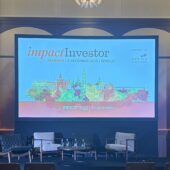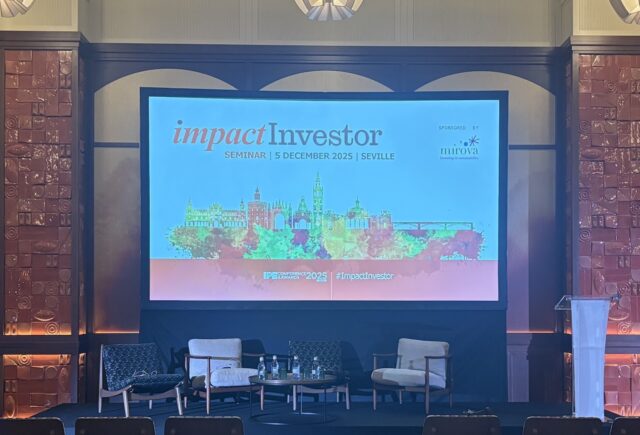Judith Rodin and Saadia Madsbjerg, veterans of the Rockefeller Foundation “explore a burgeoning movement of bold and ambitious innovators,” and tell us it’s time to add the R of resilience to ‘ESG’.

The authors of ‘Making money moral – How a new wave of visionaries is linking purpose and profit’ have that enthusiasm, some might say hyperbole, characteristic of New York finance.
Rodin describes herself as “a pioneer, innovator, change-maker, and global thought leader” who has “transformed two global institutions.” At one of these, the Rockefeller Foundation, she worked with the book’s co-author, Saadia Madsbjerg, who led the foundation’s financial innovation programme.
Part of their book reads like a potted history of the burgeoning impact movement, and inevitably the Rockefeller Foundation’s role looms large.
For example, they tell us it all “started in 2007, when the Rockefeller Foundation convened a group of investors, entrepreneurs, and philanthropists at its Bellagio Conference Center in Italy.”
It was there, so they claim, that the term “impact investing” was coined.” This is a bold claim but one backed up by some of those attending, such as Nick O’Donohoe, the CEO of CDC.
Insights from pioneers
The authors showcase a large cast of change-makers, pioneers and thought leaders. They offer practical advice and answers to key questions.
These testimonies and the authors’ observations about the future are the kernels of this book. The writers hope that this will ‘help to turn inspiration into action”.
They introduce us to a large number of interesting and genuinely innovative entrepreneurs. People like David MacDonald, who founded the ethical advisory firm The Path, and who amusingly told the authors: “Let’s face it, pensions are complex and boring, and as a consequence engagement is really low. But this impact-oriented approach can give you more purpose around your money and around your life.”
This is a book written by women, edited by a woman (Sarah Murray), and researched by women (Ellen Halle and Melanie Kinard). One wonderful aspect of this catalogue of change-makers is that many of them are also women.
Take Liesel Pritzker Simmons of the wealthy Pritzker family, who founded Blue Haven Initiative in 2012 with impact investing its mission.
Or take Susanne Schmitt, ‘nature and spatial finance lead’ at WWF (the World Wildlife Fund) who describes the very interesting initiative WWF-sight: a spatial land-use mapping tool which “makes it possible to see where mining activities…overlap with areas of natural and social importance.”
Impact measurement
The interviews with these ‘problem solvers’ have yielded many hidden nuggets. As the authors say, “the insights, knowledge, experience and credibility of problem solvers provide immense value.”
This is particularly true in the book’s strongest section, which examines what Maryanne Hancock, CEO of Y Analytics, describes as “an important shift in the evolution of impact measurement.” Now “impact investing goes beyond intention alone.”
The authors demonstrate that impact measurement is “a crowded and complex landscape.” The initial focus on CSR in response to the rise of ESG investing has led to “diverging taxonomies, standards, metrics, and ratings.”
They argue that “the data are all over the place” and cite the famous article in The Wall Street Journal showing some rating companies ranked Exxon above Tesla.
There is an interesting exploration of the limitations of current impact measurement methods, and some tentative solutions. “Investors remain torn between the need for standardization and a desire for customization,” the writers conclude.
“Data is the easy bit”
Fortunately, some solutions are suggested. Materiality is at the core, we are told. As Ian Woods, head of ESG Research at AMP Capital observes: “data is the easy bit, analysis is the relatively easy bit. It’s the ‘so what’ in each asset class that is the challenge.”
Technology and intelligence-based platforms will play a vital role in the future of impact investing. Rodin and Madsbjerg point to the work of APG and PGGM, two Dutch pension fund institutions, who have created an online platform to help assess the social and environmental impact of public equity investments.
Claudia Kruse of APG told how she developed The SDI Asset Owner Platform with the data science team of Deloitte, now spun out as Entis (with APG as its majority owner).
The authors conclude that “despite the current confusion, we believe impact measurement will ultimately standardize and harmonize” and that “this is important.”
The R of resilience
The impact of Covid is an underlying theme in this book. It is most interestingly dissected in the Epilogue. The authors talk about the need for economists and financial practitioners to worry not just about ‘black swan’ events, but also about ‘green swans’.
The changes in the environment and biodiversity are what is referred to here, but they also suggest that “Covid-19 has been the first such event, but it’s unlikely to be the last.”
In looking to the future, the authors assert in the epilogue that “Covid-19 will lead to a broadening of the E in ESG.” The pandemic… “has led many investors to conclude that environmental considerations must go beyond cutting greenhouse gas emissions to other elements such as biodiversity and natural resources.”
They note the effects of the pandemic also on social impact investing, as “social issues assumed new prominence” and the human, social side of corporate governance has risen sharply up the ESG agenda.
But most importantly they suggest the addition of the letter R to ESG to create ESGR, because “resilience is rapidly making its way into corporate and investment considerations.”
According to them, Covid has warned us of a need for greater preparedness for unexpected events – “the need to build capacity to prepare more effectively” and “rebound more quickly.”






